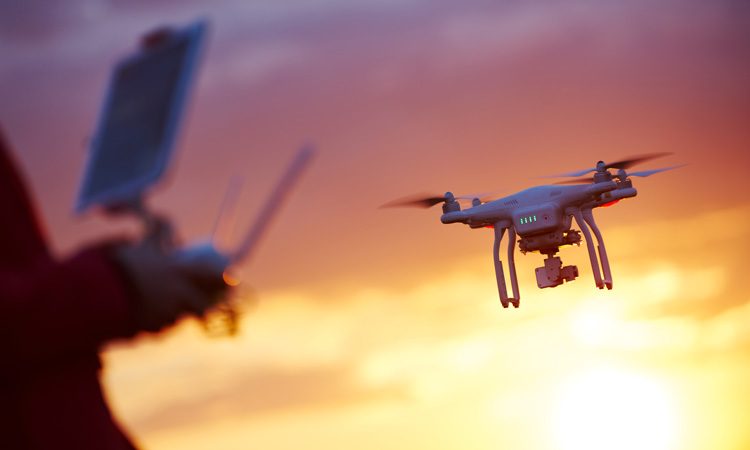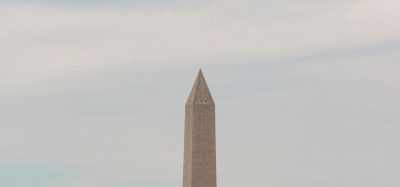How can we ensure the responsible use of drones?
Posted: 19 August 2019 | Lee Mansell | 1 comment
Following recent disruptions, new legislations regarding drones are coming into force, including increased airport exclusion zones, additional police power, fixed-penalty notices and modern technologies to detect and repel drones. Lee Mansell, COO of Operational Solutions, details how airports should use an UTM system to safely integrate drones into their operations.


There is no doubt drones can bring both commercial and societal benefits. Responsible use of drones must, however, include legislative compliance. This legislation has to be enforceable to make any difference and even then, there is an argument it will not deter ‘bad actors’. However, if authorities are given the resources to enforce the legislation then there is a genuine threat of detection followed by detention. That could persuade the bad actor that the chances of completing their mission are too low to justify it. Some terrorists are as motivated by the publicity a successful attack generates as by the actual harm caused. A defeated attack presents a negative publicity risk and potential long-term disruption to terrorist capability.
There is no doubt drones can bring both commercial and societal benefits. Responsible use of drones must, however, include legislative compliance. This legislation has to be enforceable to make any difference and even then, there is an argument it will not deter ‘bad actors’. However, if authorities are given the resources to enforce the legislation then there is a genuine threat of detection followed by detention. That could persuade the bad actor that the chances of completing their mission are too low to justify it. Some terrorists are as motivated by the publicity a successful attack generates as by the actual harm caused. A defeated attack presents a negative publicity risk and potential long-term disruption to terrorist capability.
It is important to distinguish between intentional and inadvertent breaches of legislation. Legislations may not prevent deliberate acts, however awareness of the legislation may significantly reduce instances of the inadvertent event. A means of assessing potential intent of a drone is needed.
Effective technological solutions do exist
There is an opportunity for the UK to become a world leader in drone detection. How drones will be identified and traced to their owners is a key issue. Some drones already have unique identifiers (e.g. MAC address) but a simpler system may be required. Police are increasingly carrying out forensic identification of drones – it is amazing what intelligence can be gathered from photos stored on a drone.
Just because police will have the power to take drones down doesn’t mean we will see that happening routinely. There are many considerations – not least how to bring it down and who is liable for damage or injury caused by drones that crash due to intervention. Several companies offer net capture systems, jammers and even special munitions. There are advantages and disadvantages to all these systems; the decision to take down a drone could be as contentious as the decision to deploy armed police.
We’ll leave mitigation/defeat systems aside for now – not least because they are nearly all illegal in the UK at present. The ability to know where a drone is (and an idea of its intent) is fundamental to informing the airport operators’ range of responses. This includes when to close and re-open a runway, which requires real-time and accurate data. Absolutely essential is to drive the false alarm rate to as low as possible without risking missing genuine threats. One of the first issues an airport faces when a drone detection system is installed is that the number of reported drones will increase as they become aware of drones of which they were previously ignorant. If disruption stems from false alarms the potential negative publicity may be even worse. Therefore, airports will need to consider their concepts of operations in light of the new information flows that they will have access to.
Authorities need to detect, track and identify
Reliable detection, tracking and identifying capabilities are required to support evidence gathering and maximise the mixed use of airspace. This is not about stopping drones from using the airspace, it is about facilitating the best use of airspace by a multitude of users.
There are two types of detect, track and identify technologies: Cooperative and non-cooperative.
Cooperative technologies
Manned aviation cooperative systems include IFF and ADS-B (and others) and procedural methods (e.g. confirming to a flight plan). There are corresponding systems in the drone world. These leverage existing technology (e.g. mini ADS-B) but also use new ones (often 4/5G based). Many drones report their position to their ground control station – often linked to a smartphone or tablet. This can then interface with other systems to report a drone’s position to other airspace users.
Non-cooperative technologies
Non-cooperative systems need sensors to detect the position of a drone not known through cooperative means (or where the cooperative position is untrustworthy such as through GPS spoofing). Eventually all analysis leads to the same conclusion – a layered system of cross spectrum sensors is required. Radar, radar frequency, electro-optical/infra-red and acoustic sensors are all being used. Each has advantages and disadvantages, often dictated by the characteristics of the target drone. Unfortunately, reliably detecting, tracking and identifying non-cooperative drones is very difficult. They’re small, often slow moving (or hovering) and contain relatively little metal: A challenge for radar. Size and colour make them difficult to see with even high-end cameras. They are relatively quiet, and the world relatively noisy, so acoustic sensors are easily swamped. The sensor manufacturers can overcome many of these issues to some degree. But, there is no single sensor ‘silver bullet’. Multiple sensors working across multiple spectrums has to be the answer.
This gives rise to more problems – technical complexity and information management. Technical complexity in that sensors needed to detect drones need to be optimised for that purpose (a radar good for seeing an A380 at 150 miles is hopeless at seeing a DJI Inspire at two miles). Many drones operate on 2.4GHz; picking that signal out against the cacophony of Wi-Fi, Bluetooth and other devices using 2.4GHz requires very sensitive – and expensive – equipment.
Cameras capable of seeing drones at useful ranges need exceptional quality optics and, even then, will be operating at high zoom levels which in turn need high-quality pan, tilt and zoom mechanisms. It is rather like looking at the sky through a straw, so maintaining tracking once you’ve got the drone in the field of view is complex. Information management is needed as however complex the outputs from the sensors, they need to be presented to the user unambiguously.
Fusion and correlation between sensors is challenging – by their very nature radars and RF sensors may ‘see’ the same drone in two slightly different places. This can be due to minute time differences in detection, misalignment of sensors or environmental factors such as RF signal reflection. It is then necessary to resolve whether that really is one drone or two drones close together.
There are existing software solutions that can be re-purposed for this role, often military systems that take multiple sensor feeds to build an air picture. These are frequently expensive and have a degree of user complexity that requires a high level of training. Dedicated alternative command and control and sensor integration solutions that are optimised for the drone task are starting to appear, albeit the R&D costs are relatively high and extensive testing is required.
What should airports do?
Airports need to find ways to safely integrate drones into their operations: An unmanned traffic management system (UTM). Such systems must support flight planning through to dynamic change requests together with an ability to react safely and logically in the face of unplanned interventions. Many companies are working on UTM systems, often alongside national airspace agencies. It remains to be seen if one system will triumph or if a number of different systems can co-exist. What is common to the majority of them is the ‘carrot-and-stick’ approach used in manned aviation airspace – the more control you are prepared to cede and the more information you are prepared to share, the more airspace will be opened up to you. In manned aviation an aircraft with the necessary equipment (landing aids, conspicuity systems, collision avoidance and more) and a crew with appropriate training can access the most closely controlled airspace (in return for accepting a high level of air traffic control). For an unmanned aircraft system (UAS) a similar approach is likely – to operate in highly-regulated, congested airspace, the UAS will need to demonstrate high levels of reliability and assurance, have appropriate technology on board and be operated by trained personnel.
For UTM to work it must incorporate drone-detection capability. As well as having sensors that receive information sent out by the drone, the system will also need non-cooperative sensors (radar, RF, EO/IR, etc.) so that situational awareness is maintained at all times. This meets the requirement to detect rogue drones – the UTM system will quickly unravel if unknown drones appear and exhibit unpredictable behaviours. A driving factor that will accelerate the need for combined UTM and drone detection is beyond visual line of sight (BVLOS) operations. Current legislation requires a drone to be in sight and under your control at all times (albeit with some exemptions). As drones fly further and more autonomously, their utility and range of applications increases further, driving a need for UTM systems to have greater coverage and functionality.
Airports are early adopters of drone technology and, therefore, will need to be early adopters of UTM and drone detection. They have unrivalled experience of integrated air operations and, far from seeing drones as a threat to that operation, are looking for opportunities. Unmanned freight aircraft are in development; once they are big enough to need fixed runways, existing airports will likely be part of the supporting infrastructure. The airline industry is a leader in ‘just-in-time’ spares supply. British Airways’ 24/7 spares distribution facility near Heathrow provides parts to their own fleets and other airlines. Whilst the facility has easy access to the M3, M4 and M25, that often means easy access to congestion. To put the part on a drone and send it to an ‘AOG’ would be a logistical dream – truly joined-up UTM could facilitate this and the drone can bring another part back by return flight (or be tasked on another mission).
Far from keeping drones out, airports need to find ways to bring them in – safely. For that UTM is needed and requires an effective drone-detection system for cooperative and non-cooperative drones. This is a rapidly developing area and a number of systems are emerging. Ideally, they will all be sufficiently open protocol (without compromising security) so that they can co-exist and, indeed, interlink. That way we will likely see UTM and detection ‘bubbles’ starting to appear around airports and, in due course, those ‘bubbles’ being linked up to give a wider UTM area. Coupled with the push to BVLOS operations there is a genuine opportunity to bring together the underlying technologies to the significant benefit of the airline industry, airport operators and the multitude of other industries that rely on those transport links.
Biography
Lee Mansell, Chief Operating Officer at Operational Solutions was an Aerospace Battle Manager in the Royal Air Force for 20 years, finishing his military career as a Flight Commander on 54 Squadron. Since leaving the RAF, Mansell has worked in both military and commercial flight simulation, joining Operational Solutions in 2015. Since then he has been part of the team building OSL’s counter drone understanding and capabilities and has worked with a range of clients including government agencies and several airports.
Stay Connected with International Airport Review — Subscribe for Free!
Get exclusive access to the latest airport and aviation industry insights from International Airport Review — tailored to your interests.
✅ Expert-Led Webinars – Gain insights from global aviation leaders
✅ Weekly News & Reports – Airport innovation, thought leadership, and industry trends
✅ Exclusive Industry Insights – Discover cutting-edge technologies shaping the future of air travel
✅ International Airport Summit – Join our flagship event to network with industry leaders and explore the latest advancements
Choose the updates that matter most to you.
Sign up now to stay informed, inspired, and connected — all for free!
Thank you for being part of our aviation community. Let’s keep shaping the future of airports together!


















Buenos Aires, Argentine Republic, August 21, 2019
Mr. Lee MANSEL
Of my highest consideration
I want to congratulate you for the excellent article on drones that you wrote. For us Argentines, like most airports in the world, we have problems with the particular use of drones.
I work in the Argentine Air Navigation Company (EANA), in the area of safety as a training analyst. EANA is the company that is responsible for air navigation in our country,
I congratulate you again for your article.
Walter Zamprogno
SMS EANA S.E.